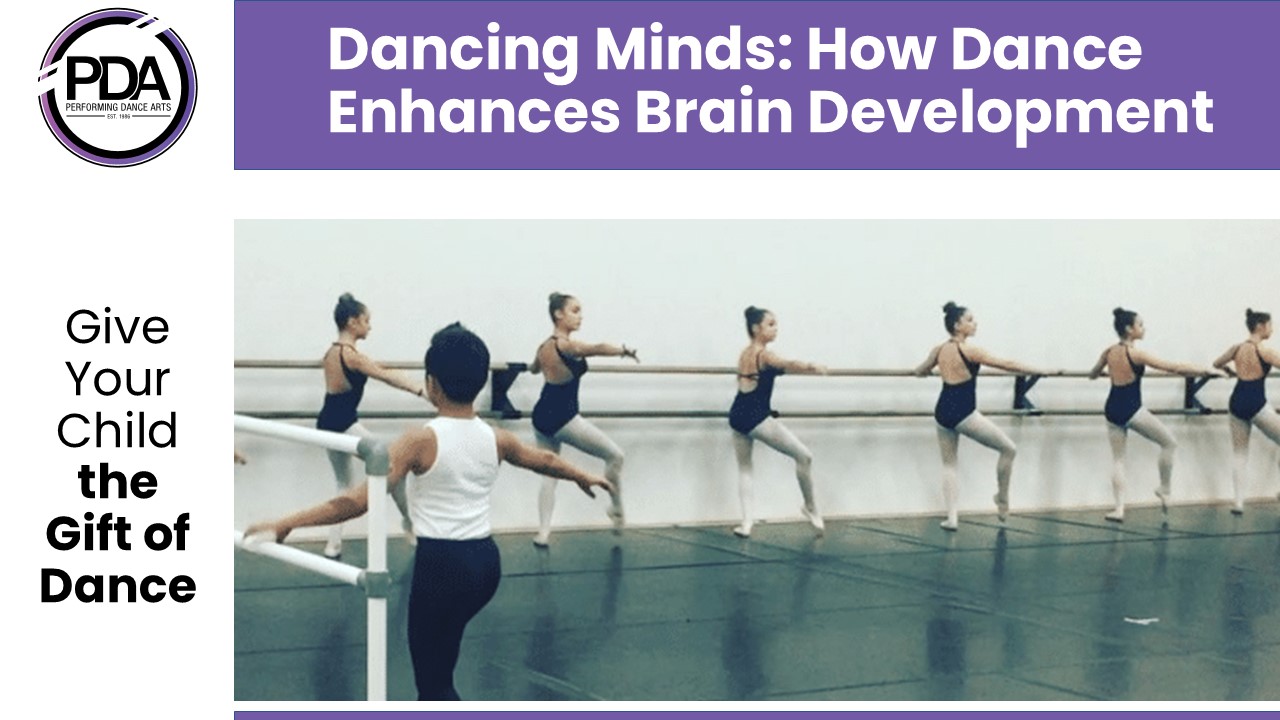Dancing and Brain Development in Early Years - PowerPoint PPT Presentation
Title:
Dancing and Brain Development in Early Years
Description:
Early childhood is a critical time for the brain development of your toddler. That can be an intimidating thing, especially if you’re unsure of how to nurture them during these growing years. It’s important for children to have a creative outlet in their life with which they’re free to express their feelings and learn about themselves. In fact, many educators argue that the arts are just as important as vocabulary and literacy, given the benefits of music and movement for early childhood development. – PowerPoint PPT presentation
Number of Views:0
Date added: 22 October 2024
Slides: 11
Provided by:
performingdanearts
Category:
Entertainment
Tags:
Title: Dancing and Brain Development in Early Years
1
- Dancing Minds How Dance Enhances Brain
Development
- Give Your Child theGift of Dance
2
- Introduction
- Early childhood is a critical period for brain
development. - Brain is most malleable during early childhood
- Stimulating activities like dance can
significantly impact brain development - Dance combines physical movement with cognitive
processes - Dance, with its unique blend of physical
movement, cognitive challenges, and emotional
expression, offers a powerful way to stimulate
and enhance brain development in young children.
3
- Neuroplasticity The Brain's Ability to Change
- One of the most remarkable aspects of brain
development is its ability to change and adapt in
response to experiences. This phenomenon is known
as neuroplasticity. - Neuroplasticity is essential for learning,
memory, and recovery from brain injury. It allows
the brain to adapt to new situations and
challenges, and it is particularly active during
childhood and adolescence. - Factors that influence brain development
- Genetics It determines the basic structure and
function of the brain. - Environment Early experiences, nutrition, and
exposure to toxins, can significantly influence
brain development. - Experiences Engaging in stimulating activities,
such as dance, can help to promote brain
development by fostering new connections between
neurons.
4
- Physical Activity and Brain Development
- How physical activity stimulates brain growth
- Increased blood flow Physical activity boosts
brain blood flow, delivering essential nutrients
and oxygen. This enhances cognitive function and
stimulates brain cell growth. - Neurotransmitter release Physical activity
releases neurotransmitters like dopamine and
serotonin, essential for learning, memory, mood,
and brain cell growth. - Improved brain connectivity Physical activity
strengthens neural connections, improving brain
connectivity and cognitive abilities. - Reduced inflammation Physical activity reduces
inflammation, improving brain health.
5
- Cognitive Benefits of Dance for Brain Development
- Problem-solving Dance enhances critical thinking
and creativity, improving problem-solving skills. - Improved memory Dance strengthens memory by
requiring children to remember complex sequences
of movements. - Enhanced spatial reasoning Dance develops
spatial awareness by requiring children to
understand and manipulate their bodies in space. - Increased attention span Dance enhances focus
and attention span by being a highly concentrated
activity. - Enhanced cognitive flexibility Dance develops
adaptability by requiring children to adapt to
new situations and challenges. - Improved executive functions Dance improves
planning, organizing, and decision-making,
strengthening executive functions.
6
- How Different Regions of the Brain Are Stimulated
through Dance
Brain Region Stimulated Functions Dance Relationship
Hippocampus Memory formation, spatial awareness Learning and remembering routines, understanding relationships between objects
Basal Ganglia Habit formation, reward system Practicing dance movements, motivation
Parietal Lobe Sensory integration, spatial awareness Engaging senses, navigating dance space
7
- How Different Regions of Brain are Stimulated
through Dance
Brain Region Stimulated Functions Dance Relationship
Prefrontal Cortex Decision-making, planning, problem-solving, emotional regulation Remembering choreography, adapting to rhythms, coordinating movements, stress relief
Motor Cortex Movement control, fine motor skills Executing dance steps, precise muscle control
Cerebellum Balance, coordination, timing Maintaining rhythm, navigating space, improving posture
8
- Different Dance Styles and Their Benefits for the
Brain
Dance Style Benefits
Ballet Spatial awareness, balance, coordination, discipline, posture
Hip-Hop Rhythm, timing, creativity, expression, cardiovascular health, strength
Salsa Social interaction, cardiovascular health, coordination, rhythm, memory
Jazz Improvisation, flexibility, range of motion, musicality, creativity
Contemporary Emotional expression, mind-body connection, flexibility, strength, balance
9
- Contact us
- Vaughan Studio
- Etobicoke Studio
Yorkdale Studio
- 331 Cityview Blvd., Unit 2 Vaughan, ON
- L4H 3M3
- 37 Advance Rd., Suite 104
- Etobicoke, ON
- M8Z 2S6
124 Cartwright Ave. North York, ON M6A 1V2
- 905-856-1030
- 647-640-5010
647 262-1550
- info_at_pdayorkdale.ca
info_at_pdato.ca
- info_at_performingdancearts.ca
10
- Thank you































